A Local's 2 Week Itinerary Sicily
Two weeks in Sicily
Having explored countless corners of Italy, I can confidently say that Sicily is one of the most captivating regions in the country. Surrounded by the sparkling Mediterranean and dominated by the majestic silhouette of Mount Etna, this island offers a unique blend of ancient history, vibrant traditions, and raw authenticity. From its impressive archaeological sites and baroque towns to its lively markets and breathtaking coastlines, Sicily delivers an unforgettable Italian experience—far beyond the usual tourist trails, full of character and stories waiting to be discovered.
Heads up: this page may include affiliate links. By clicking and/or purchasing, I may receive a small commission at no extra cost for you. I only recommend tools I have personally vetted.
Practical Information
Location
Sicily, the Mediterranean’s largest island, is a world of contrasts and endless discoveries. Just off the “toe” of Italy’s boot, it blends layers of ancient history with a vibrant, living culture. Here, bustling cities meet quiet hilltop villages, golden beaches give way to volcanic slopes, and the sea stretches toward clusters of enchanting smaller islands—each with its own character.
Transportation & Exploration
✈️ By Plane: Sicily has two main international airports: Palermo (Falcone-Borsellino Airport) in the northwest and Catania (Fontanarossa Airport) in the east. Both connect to major European cities and Italian hubs like Rome and Milan. Smaller airports in Trapani and Comiso serve budget airlines.
👉 You can book your plane ticket here🔗.
🛳 By Ferry: You can also reach Sicily by ferry from mainland Italy (Naples, Reggio Calabria, Villa San Giovanni) or other Mediterranean destinations. The main ports are in Palermo, Messina, and Catania.
⚠️ I wouldn’t recommend it – it’s costly and takes a long time.
🚗 By Car: To truly experience Sicily, renting a car is highly recommended. A car gives you the freedom to explore remote beaches, hilltop villages, and natural wonders like Mount Etna or the Valley of the Temples at your own pace. That said, driving in Sicily can be an adventure in itself—locals drive with passion (and sometimes like crazy!), but honestly, it’s part of the charm. Avoid driving in the city centers of Palermo and Catania, which can feel like a jungle. Instead, look for monitored parking areas on Google Maps; they cost a little extra, but it’s worth it to leave your car there (watched) and explore on foot.
👉 You can book your car on Booking🔗 or on Rentalcars🔗.
⚠️ Parking can be tricky, especially in coastal towns. Here’s what you need to know:
- White stripes: Free parking, but check for time limits—these are always indicated on nearby signs.
- Blue stripes: Paid parking. Display your ticket clearly on the windshield, and watch for any time restrictions.
- Yellow stripes: Reserved for people with disabilities, police, or other special uses—avoid parking here.
- Blue + yellow stripes: Reserved for residents. Unless you have a special permit from your hotel, you cannot park here. In many coastal towns, these spaces—and sometimes even other areas—are often reserved exclusively for residents, so be especially careful.
🚆 By Train & Bus: If you prefer not to drive, you can rely on Trenitalia for train connections between major cities (e.g., Palermo–Catania, Catania–Messina). Buses often cover routes that trains don’t, such as smaller inland towns. Tickets are affordable and available at stations or online.
⚠️ While trains and buses do exist, getting around with them can be challenging. They’re slow and prone to delays.
🚶♂️ On Foot: Sicilian cities like Palermo, Catania, and Syracuse are best explored on foot, especially their historic centers filled with lively markets, ornate churches, and narrow streets brimming with character. Many of the main attractions are within walking distance, so pack comfortable shoes and be ready to wander.
Weather
Sicily enjoys a classic Mediterranean climate with hot, dry summers and mild winters:
- ☀️ Summer (June to August): Hot and sunny, with temperatures often between 28°C and 35°C (82°F to 95°F). Perfect for beaches, but be prepared for heat in inland areas.
- 🍂 Autumn (September to November): Warm and pleasant, 18°C to 28°C (64°F to 82°F). Fewer tourists and plenty of cultural festivals make this a fantastic time to visit.
- ❄️ Winter (December to February): Mild, 10°C to 16°C (50°F to 61°F). Snow is rare except on Mount Etna, where you can even go skiing!
- 🌸 Spring (March to May): Lovely weather, 15°C to 25°C (59°F to 77°F), wildflowers in bloom, and ideal for sightseeing without the summer crowds.
Accommodation
Sicily offers everything from luxury seaside resorts and boutique hotels in historic palazzos to family-run B&Bs and agriturismi (farm stays).
👉 On my trip, I chose campgrounds because I could bring my own tent and car, giving me the freedom to explore at my own pace. If you love being surrounded by nature, this is an amazing way to experience the area:
While in Palermo and Catania, I stayed at B&B La Tua Dimora🔗 and Domus Coralla B&B Racconti di Viaggio🔗
Best travel guide to Sicily
South of Sicily
Southern Sicily is a land of stunning beaches, charming towns, and rich history. From ancient Greek temples to sun-soaked coastlines and picturesque baroque cities, this region offers a unique mix of culture, nature, and authentic Sicilian life.
Agrigento
- Old Town (Centro Storico): The Old Town of Agrigento, perched on a hill above the Valley of the Temples, is a charming maze of narrow streets, historic piazzas, and Baroque churches. Wandering here feels like stepping back in time—you’ll find local cafes, artisan shops, and stunning viewpoints overlooking the ancient temples and surrounding countryside.

- Valley of the Temples🔗: The Valley of the Temples (Valle dei Templi) is one of Sicily’s most iconic sites and a must-see in Agrigento. This archaeological park features remarkably well-preserved ancient Greek temples, including the famous Temple of Concordia. Walking among these grand ruins, surrounded by olive groves and rolling hills, feels like stepping back into antiquity.
✨ Sunrise and sunset are magical times to visit, when the golden light makes the stone temples glow. 👉 You can book your entrance here: Agrigento: Valley of the Temples Skip-the-Line Sunset Tour🔗

- Scala dei Turchi🔗: Scala dei Turchi is a breathtaking natural wonder you won’t forget. Its dazzling white limestone cliffs rise from the turquoise sea in smooth, wave-like terraces, almost like nature carved a giant staircase into the coastline. Legend has it that Saracen pirates once used these cliffs as a landing point, adding a hint of history to their otherworldly beauty. Whether you’re strolling along the soft marl under your feet, watching the sunset light up the cliffs, or simply soaking in the views of the Mediterranean, Scala dei Turchi feels like stepping into a dream.
👉 You can opt for a boat tour Scala Dei Turchi: Skippered boat tour and refreshing swim🔗

Noto
- Old Town (Centro Storico): Noto’s heart is a sun-drenched labyrinth of Baroque beauty, where every street and square tells a story. From the sweeping staircases of grand palaces to hidden courtyards and cozy cafés, wandering here feels like discovering a living museum. The town’s warm stone façades glow in the sunlight, and around every corner you’ll find surprises—ornate balconies, artisan shops, and quiet spots perfect for savoring Sicilian life at your own pace.
✨ If you’re looking for a genuine souvenir rather than a mass-produced trinket, ART GALLERY Marini & Pannuzzo🔗 charming little shop is a gem. Alongside locally made magnets, they offer beautifully handcrafted paintings and mini artworks that capture the spirit of the region.
👉 You can also book online a guided tour Baroque Noto private walking tour🔗

Modica
- Old Town (Centro Storico): Nestled in the Val di Noto, Modica is a Baroque treasure with winding streets, stunning churches, and a sweet reputation—literally. Famous for its rich, grainy chocolate made using an ancient Aztec-inspired method, the town is a delight for food lovers and history buffs alike. Wander through its labyrinth of narrow alleys, admire the ornate façades of churches like San Giorgio, and pause at a local café to savor a piece of Modica’s signature chocolate while taking in panoramic views of the surrounding hills. With its mix of history, culture, and culinary indulgence, Modica is a Sicilian experience that lingers in both memory and taste buds.
👉 Modica chocolate is truly one-of-a-kind and absolutely delicious! Step into a local chocolate shop, savor its rich flavors, and don’t forget to take some home as a sweet souvenir. While you’re here, make the experience even more memorable: try a ‘Become a Chocolatier for a Day’🔗 workshop or join a guided tasting of Modica’s finest creations🔗.

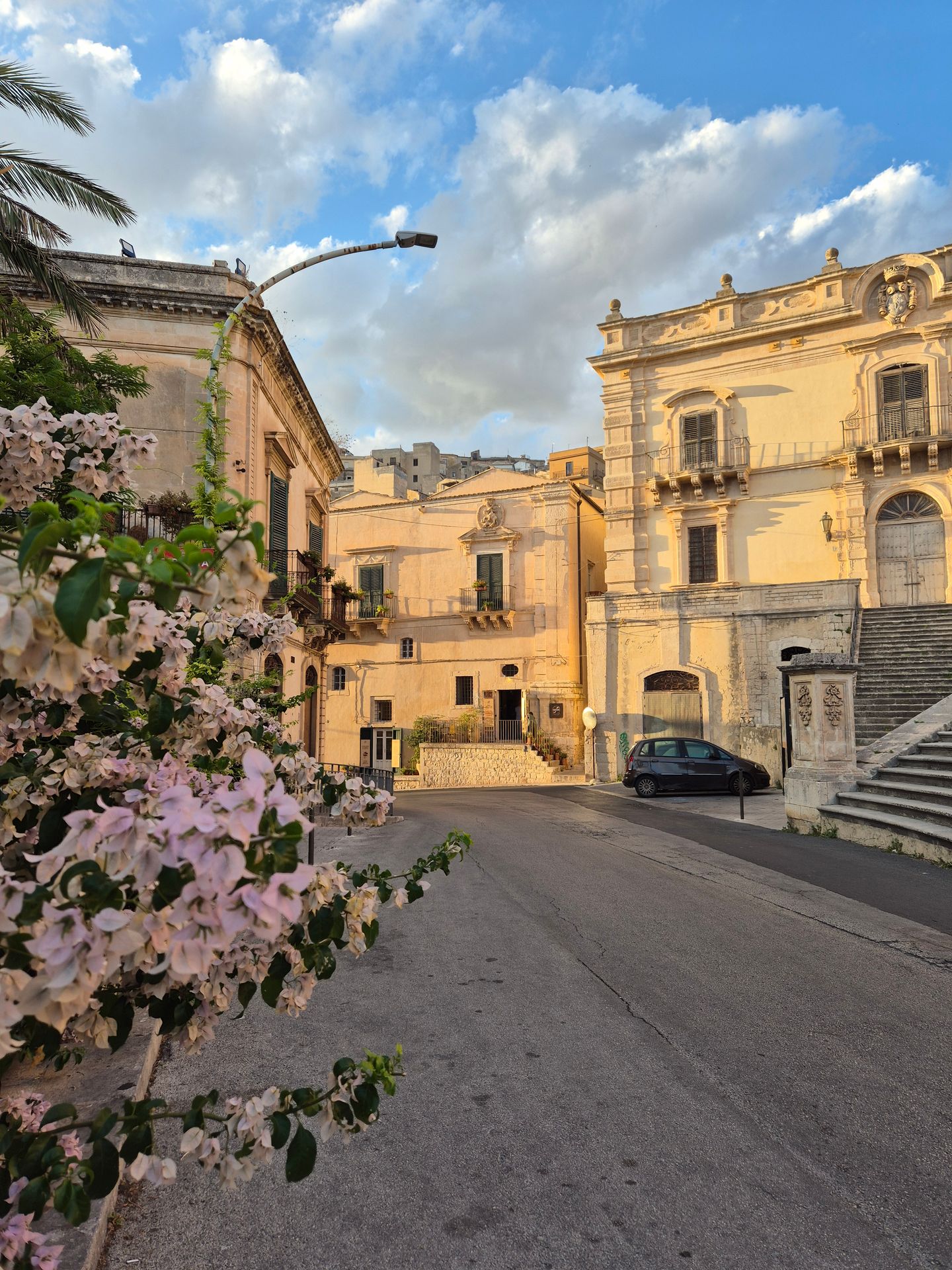
Ragusa
Ragusa is an absolute must-visit and, without a doubt, my favorite among Sicily’s enchanting baroque towns. Unlike Noto and Modica, it feels more under the radar, attracting fewer tourists and preserving an authentic charm. The views at sunset are nothing short of magical, with the golden light illuminating its honey-colored buildings. And the food scene? Simply outstanding—expect a blend of traditional Sicilian flavors and creative twists that will make every meal unforgettable. Don’t miss:
- The beautiful public garden🔗 in Ragusa: it's a peaceful spot with stunning views and a touch of old-world charm.

- Duomo di San Giorgio🔗: The Duomo di San Giorgio is Caltagirone’s stunning cathedral, a masterpiece of Sicilian Baroque architecture. It features an ornate façade, elegant interiors, and beautiful artworks, making it a must-see landmark in the city.
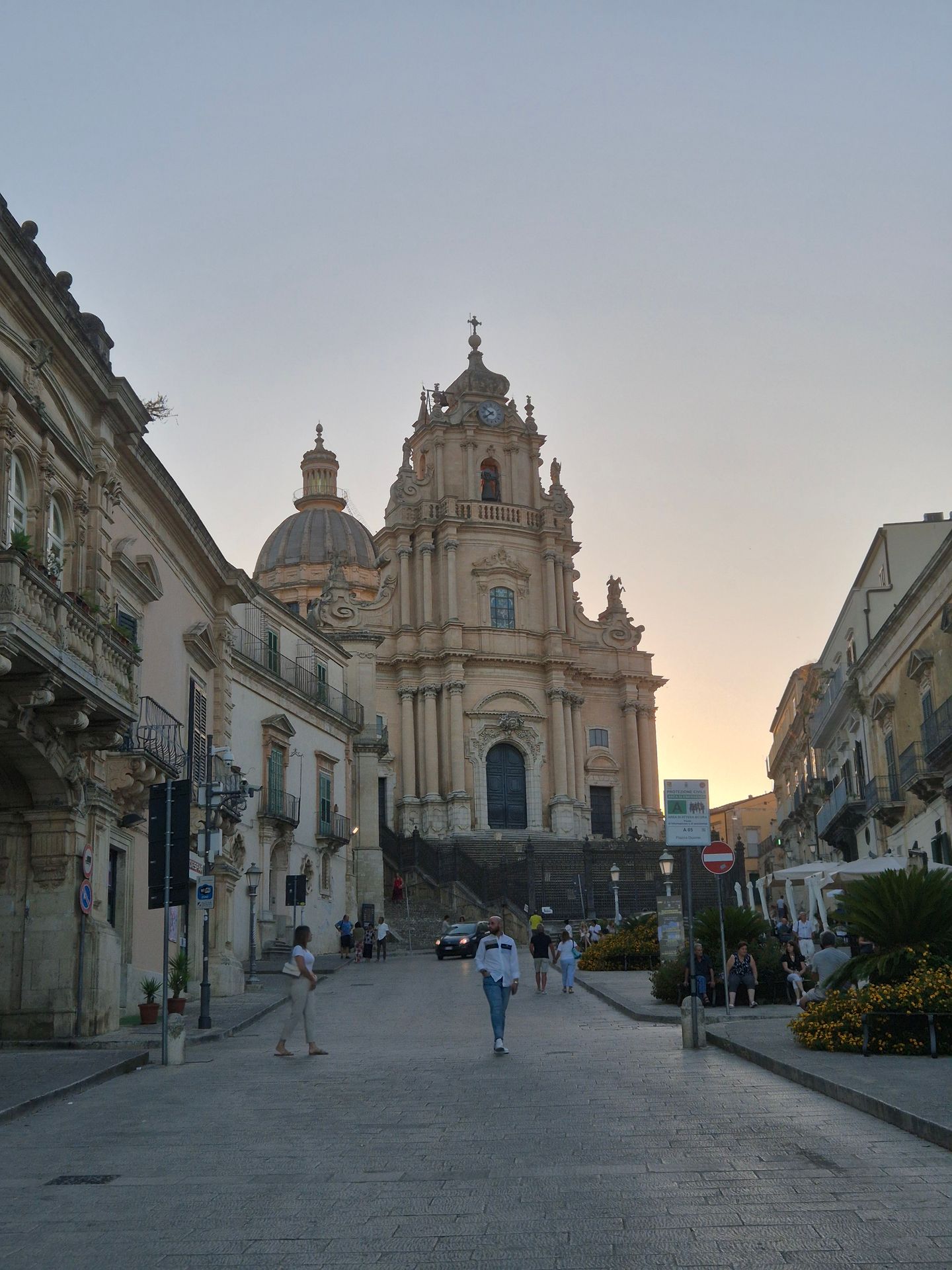
👉 You can even join a cooking class in Ragusa🔗 to learn the secrets of authentic Sicilian cuisine.
✨ Food lovers, don’t miss these two incredible spots in Ragusa for a taste of local excellence "Cucina & Vino" Osteria e Ristorante🔗 and Cucina Sincera - Chiacchiere e Pancia Piena🔗
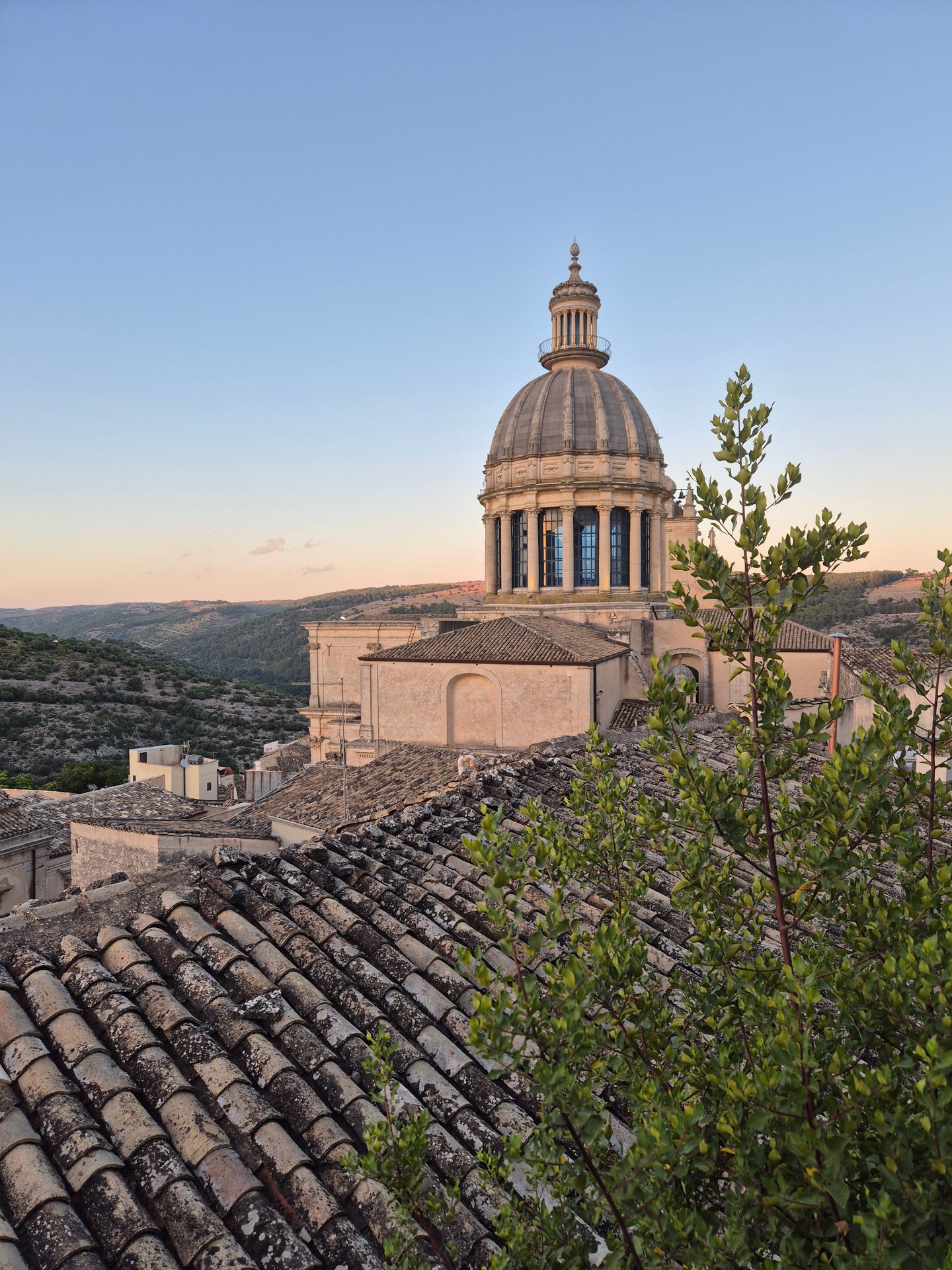
Syracuse & Ortigia Island
Syracuse, once one of the most powerful cities of ancient Greece, is a treasure trove of history and beauty. A must-see is the Archaeological Park of Neapolis, home to the impressive Greek Theatre, the Roman Amphitheatre, and the mysterious Ear of Dionysius cave.
👉 You can book here🔗 a tour of the Archaeological Park of Neapolis.
Then cross the bridge to Ortigia Island, the historic heart of Syracuse, where narrow alleys lead to elegant piazzas, baroque churches, and lively markets. The charming old town of Syracuse, filled with history and character. Highlights include:
- Piazza Duomo🔗: A stunning square dominated by the Baroque Cathedral, built over a former Greek temple.
- Fountain of Arethusa🔗: A mythical spring surrounded by papyrus plants, tied to ancient legends.
- Seafront Promenade🔗: Perfect for a sunset stroll with magical views of the Ionian Sea.
- Ortigia Market🔗: A lively daily market bursting with fresh produce, spices, and Sicilian specialties. ✨ Here, I suggest stopping by Caseificio Borderi🔗, where I had some of the best sandwiches in my life!

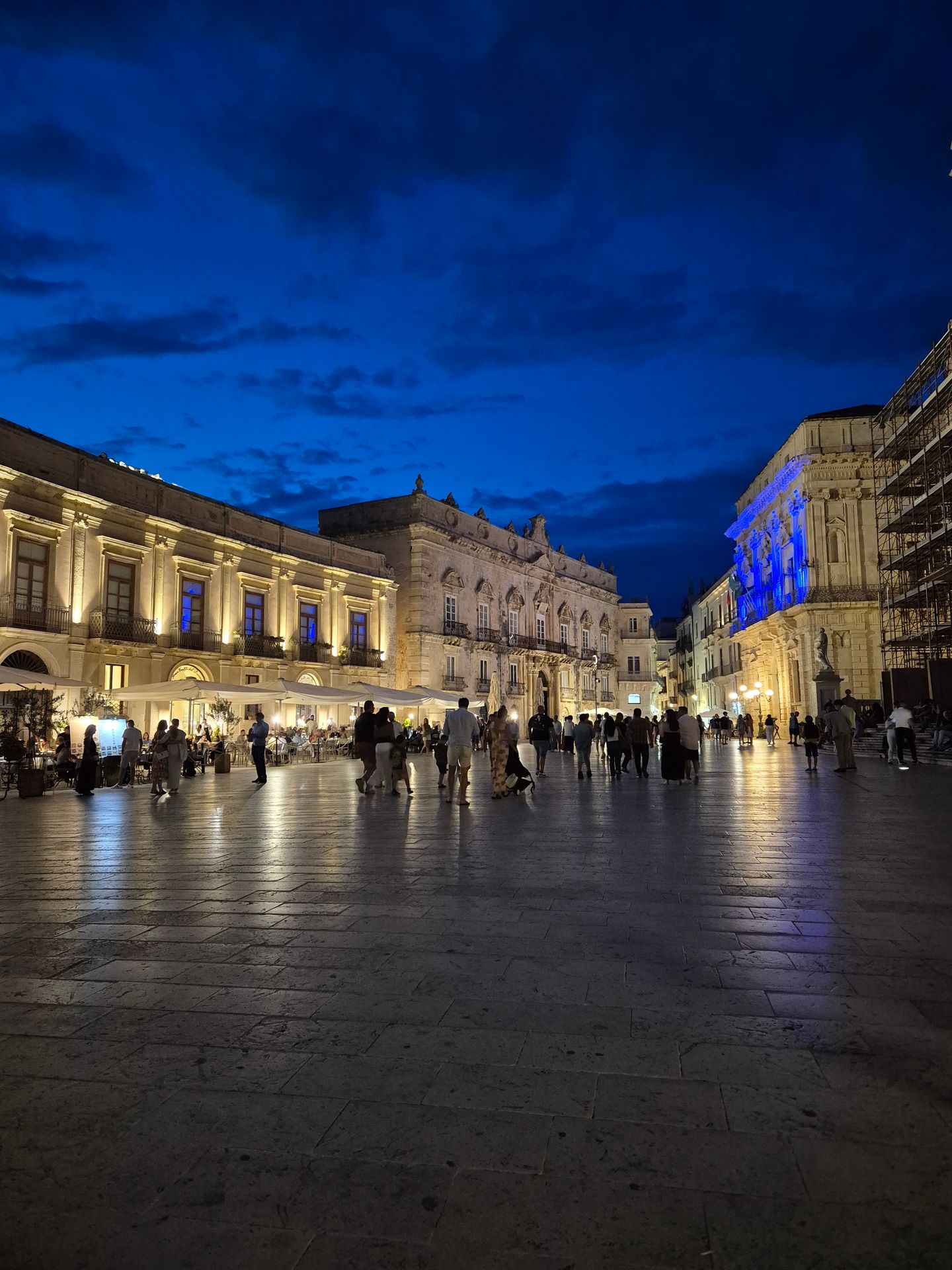
👉 Syracuse is an excellent base for exploring the surrounding area and enjoying unforgettable experiences. One of the best things to do here is a boat tour—there are countless sea caves, hidden coves, and scenic corners waiting to be discovered. Here are a couple of great options below:
- Syracuse: Ortigia Island and Sea Caves Boat Tour🔗
- Syracuse: Boat Tour with Captain Mirko, Snorkeling & Caves🔗
🍽️ If you’re looking for an unforgettable dining experience, don’t miss trying one of the charming restaurants🔗 in Ortigia, Sicily, where fresh seafood and sunset views create the perfect Sicilian evening.
Marzamemi
Marzamemi is a picturesque fishing village on the southeastern coast of Sicily, famous for its postcard-perfect charm and laid-back Mediterranean vibe. Once an important tuna fishing center, it has transformed into one of the island’s trendiest spots while preserving its authenticity.
⚠️ It’s a small village that you can explore in no time. To be honest, it feels a bit staged—undeniably beautiful, but also quite pricey. I wouldn’t recommend dining here, as most restaurants are overpriced and the quality doesn’t always match the cost.

Plemmirio Marine Protected Area
Just a few kilometers south of Syracuse lies the Plemmirio Marine Protected Area, a hidden gem still under the radar compared to the island’s famous beaches. Stretching along the Maddalena Peninsula, this rugged coastline offers wild cliffs, turquoise coves, and crystal-clear waters ideal for swimming, snorkeling, and diving. There are around 35 access points (called varchi) leading to tiny pebble bays and flat rocks perfect for sunbathing. Highlights include:
Bring a mask, fins, and water shoes, as entries are rocky and facilities are minimal—part of what keeps Plemmirio so peaceful.
👉 For a truly unforgettable experience, follow the coastal trail linking Punta Castelluccio to the lighthouse or join a local dive trip to explore sea caves and drop-offs:
- 2-Hour Diving & Diving in Marina del Plemmirio Area in Syracuse🔗
- Plemmirio Sailing Tour from Ortigia with Snorkeling🔗

Vendicari Nature Reserve
The Riserva Naturale Orientata Oasi Faunistica di Vendicari is one of Sicily’s most stunning natural gems and a must-see for nature lovers and beach seekers. Located between Noto and Marzamemi, this vast coastal reserve combines unspoiled beaches, crystal-clear waters, and rich biodiversity. It’s a paradise for birdwatchers, especially during migration seasons when flamingos, herons, and storks stop here. The reserve is also dotted with historical landmarks, like the remains of an ancient tuna factory (tonnara) and a 15th-century watchtower.
Vendicari is famous for its pristine beaches, each with its own character:
- Calamosche🔗: A gorgeous sandy cove with calm, turquoise waters, perfect for a relaxing swim. It’s about a 20-minute walk from the parking area through scenic trails, so wear comfortable shoes.
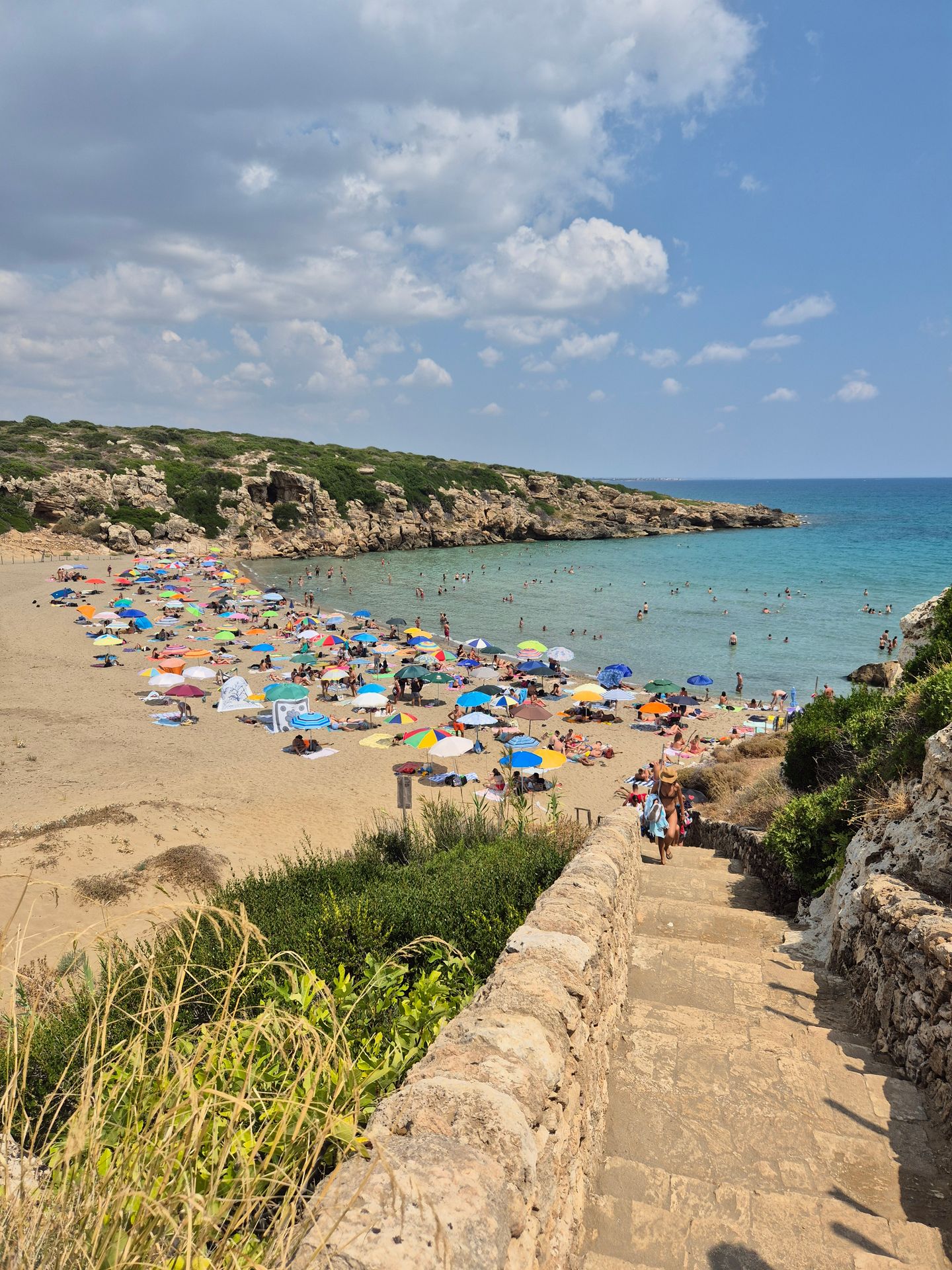
- Spiaggia di Vendicari🔗: Wide, wild, and ideal for long walks and birdwatching. The easiest way to reach it is from the Vendicari entrance near the old tuna factory and the watchtower. You can explore the old tuna factory (tonnara) and spot graceful flamingos in the surrounding wetlands.
- San Lorenzo🔗: Stunning and slightly livelier than the others, with easier access and some services nearby, making it a great option if you prefer convenience.
- Cittadella dei Maccari🔗: In my opinion, an absolute must-see! This little-known spot within the reserve is simply gorgeous, and if you’re lucky, you can witness sea turtles nesting on the beach and making their way back to the water—a truly magical experience.
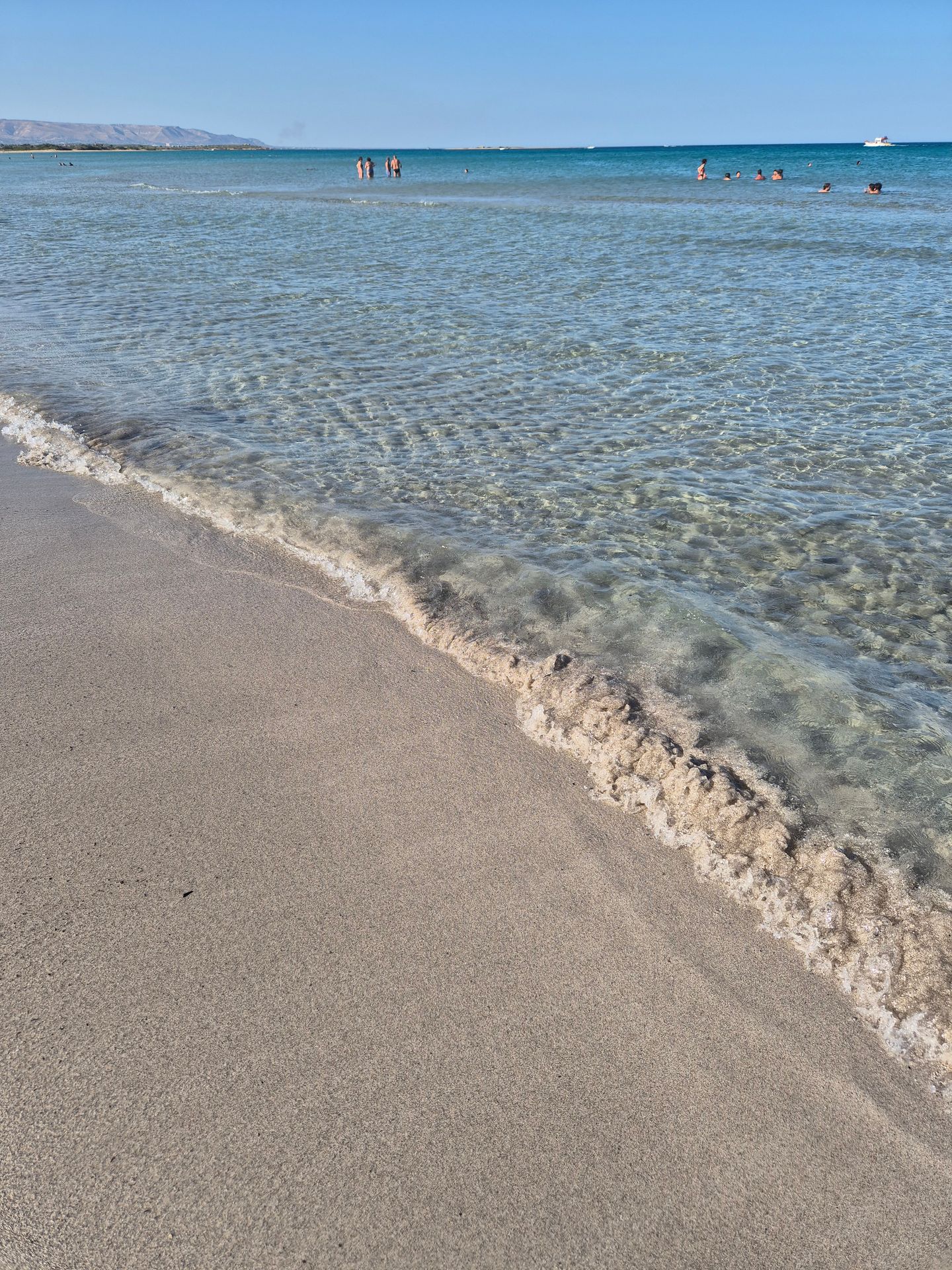
- Spiaggia di Eloro🔗: If the weather isn’t too hot, I recommend exploring the area starting from Calamosche. A hidden gem is Spiaggia di Elbora, which takes about 30 minutes to reach on foot from Calamosche. The trail is stunning and wild, offering a true sense of nature. Along the way, you’ll pass Spiaggia delle Marianelli, another beautiful spot—just be aware that it’s a nude beach.
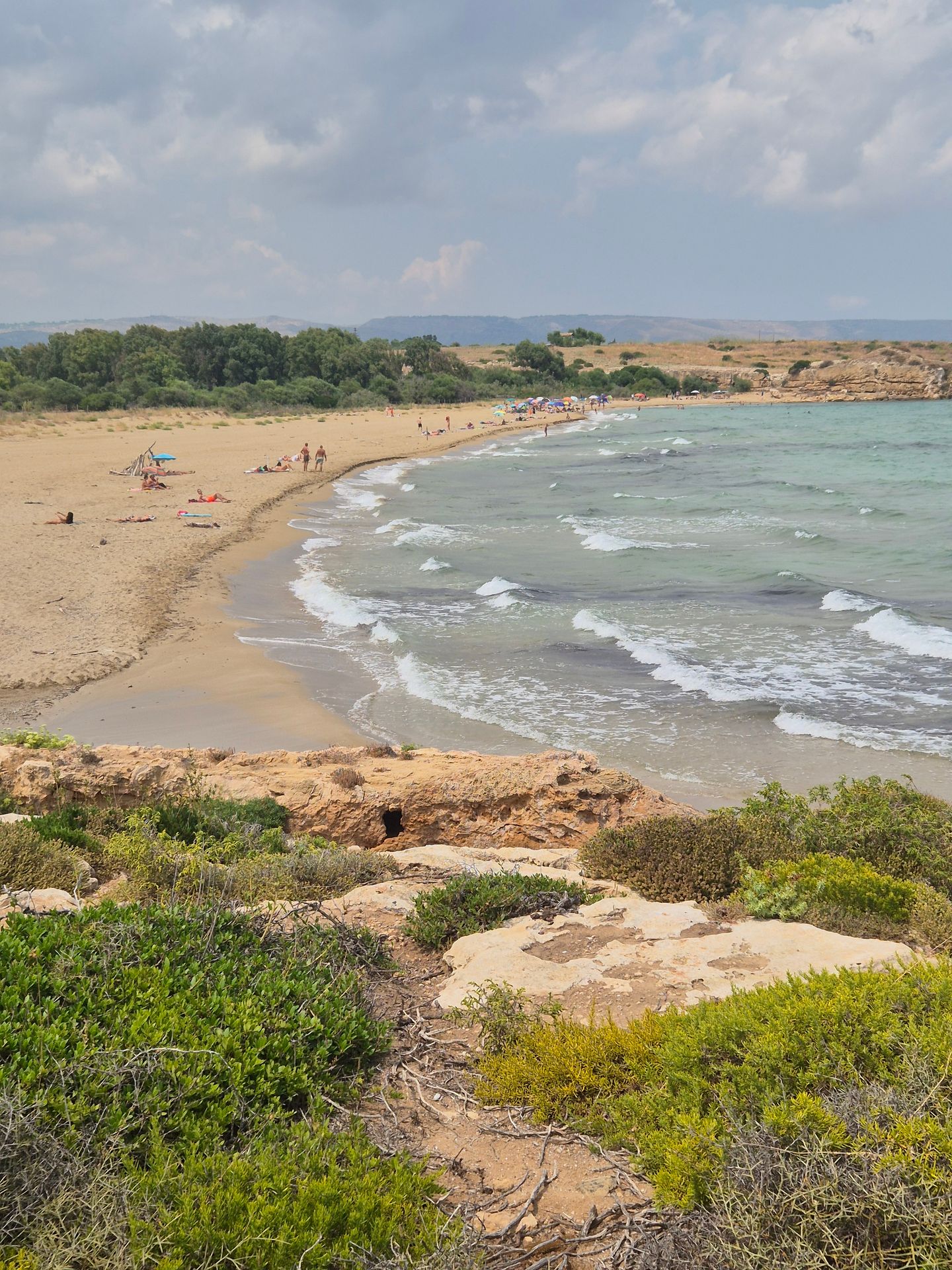
👣 How to Visit: each entrance has a parking area (paid, around €5). There is also a small entrance fee to the reserve (usually a few euros) to help maintain this protected area. The ticket is valid for one day, and you can access the whole reserve. Bring plenty of water, snacks, and sun protection, as there are few facilities inside the reserve.
Caltagirone
Caltagirone, known as the ceramic capital of Sicily, is a Baroque gem and a paradise for lovers of art, history, and craftsmanship. Here’s what you shouldn’t miss:
- Scalinata di Santa Maria del Monte🔗: This spectacular staircase is the symbol of Caltagirone. Its 142 steps are decorated with hand-painted ceramic tiles, each one unique. Climb to the top for breathtaking views over the city and surrounding countryside—especially magical at sunset.
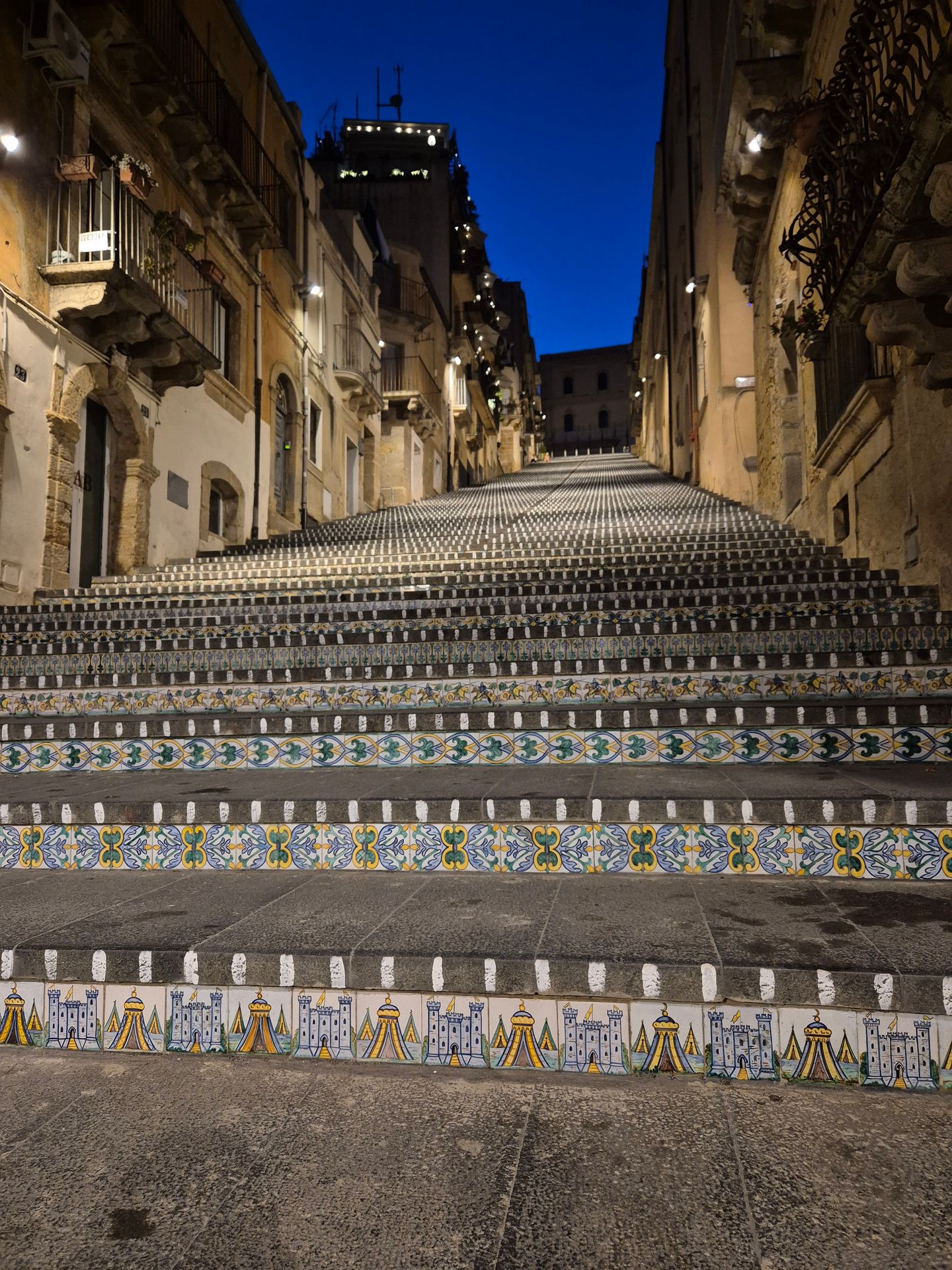
- Cathedral of San Giuliano🔗 and Santa Maria del Monte Church🔗: Don’t miss these cathedrals—both stunning examples of Sicilian Baroque style.
- Villa Comunale (Public Garden)🔗: A peaceful park designed in the 19th century with elegant ceramic benches, fountains, and plenty of shade. Perfect for a relaxing break.
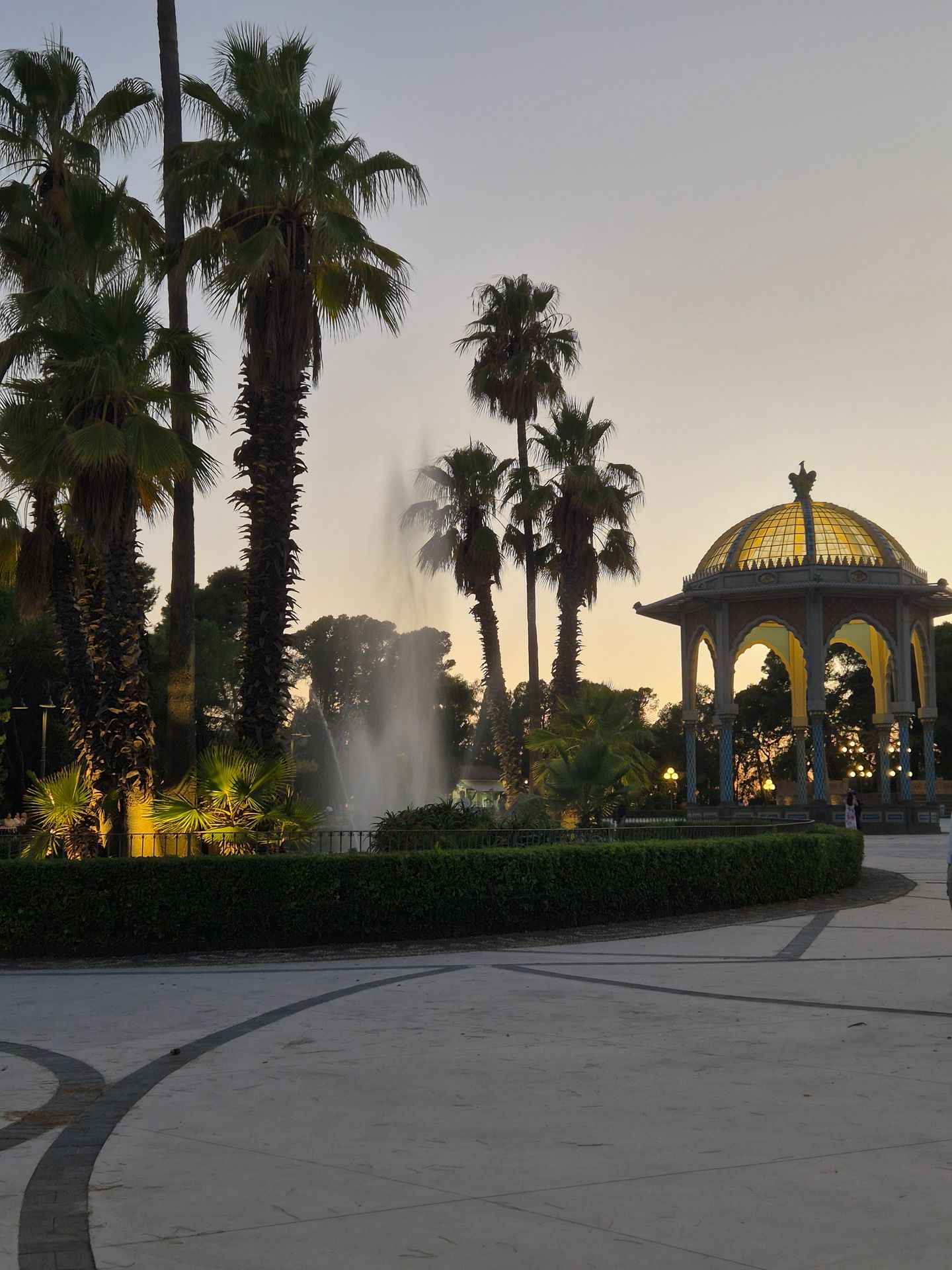
✨ Caltagirone is Sicily’s undisputed capital of ceramics, a craft that has flourished here for centuries. The city is dotted with artisan workshops and elegant boutiques showcasing exquisite handcrafted pieces. You’ll find ceramics throughout Sicily, but this is where the tradition truly originates and thrives. Bringing home a unique ceramic piece from Caltagirone is the perfect way to take a piece of Sicily with you.
👉There are several workshops🔗 where you can try your hand at making ceramics and experience this centuries-old craft firsthand.

Eastern Sicily
Catania
Catania, the vibrant city at the foot of Mount Etna, is one of Sicily’s most fascinating destinations. With its Baroque architecture, bustling markets, and dramatic volcanic landscapes, it’s a place where history, culture, and adventure collide.
✨ Catania is often skipped on a Sicily itinerary, as it feels very different from the island’s smaller, picturesque towns. However, I believe it’s absolutely worth a visit because it shows a completely different side of the region. When traveling, it’s important to experience both the iconic, touristy spots and the more raw, less glamorous corners of a destination—and Catania offers a true 360° experience. Some describe it as loud, chaotic, and even a bit gritty, but to truly understand Sicily, you need to see it all.
Here’s what to do and see in Catania Sicily:
- Piazza del Duomo🔗 & the Elephant Fountain🔗: a UNESCO World Heritage Site, visit Cattedrale di Sant’Agata🔗, the city’s main cathedral dedicated to its patron saint. Stop by Fontana dell’Elefante, the quirky symbol of Catania, a black lava elephant carrying an Egyptian obelisk

- Roman Amphitheatre🔗 & Odeon🔗: History lovers will enjoy exploring Catania’s Roman ruins, located just off Piazza Stesicoro. The Anfiteatro Romano, partly built from volcanic lava stone, once hosted up to 15,000 spectators for grand events and gladiator fights, while the nearby Odeon, a smaller and more intimate theater, was reserved for music and performances. Entrance to the Roman Amphitheatre and Odeon costs 6€. You can find more details on the official website here🔗.
👉 You can book a guided tour of Catania: Underground and Street Food Walking Tour🔗

- Catania Fish Market🔗 (La Pescheria): Just behind Piazza del Duomo, you’ll find the bustling fish market, one of the most authentic experiences in Catania.
- Restaurants in Catania, Sicily Italy: Catania’s food scene is incredible—on par with Naples! Every trattoria and street food stall serves something amazing, and the best part? It’s delicious and affordable. If you’re curious about Catania’s most authentic food traditions, head to Via Plebiscito🔗, a lively street famous for its rustic osterie serving grilled meats—especially horse meat, a local specialty. Here, you’ll find rows of open grills, the smoky aroma filling the air, and locals enjoying hearty plates late into the night. It’s not for the faint of heart, but if you want to experience Catania like a true local, this is the place. ✨Stop by Re Carlo V🔗 for an authentic Sicilian experience and enjoy a delicious grigliata mista straight from the grill.
⚠️ Catania isn’t the safest city in Sicily, so it’s best to be mindful when choosing where to stay. I recommend booking accommodation near the Borgo metro station🔗, as it’s a convenient and generally safer area. If you’re driving, always park your car in a monitored parking lot rather than leaving it on the street. It might cost a little extra, but the peace of mind is definitely worth it.
👉 I stayed at Domus Coralla B&B Racconti di Viaggio🔗
Mount Etna
No trip to Catania is complete without visiting Mount Etna, Europe’s highest and most active volcano. Whether you’re an adventure seeker, nature lover, or just curious, Etna offers a variety of experiences:
- Guided hikes to the highest craters: Explore craters, lava fields, and volcanic landscapes on trails suited for all levels. Some hikes take you close to the steaming craters for a truly unforgettable experience.
⚠️To reach the highest craters, you must be accompanied by a local guide. I highly recommend it if you enjoy hiking—it’s a bit challenging, as the cable car and bus take you up to 2,900 meters (9,514 ft), but from there you’ll need to walk the rest of the way to 3,400 meters (11,155 ft). I loved the experience, and the stunning views at the top make the effort absolutely worthwhile.
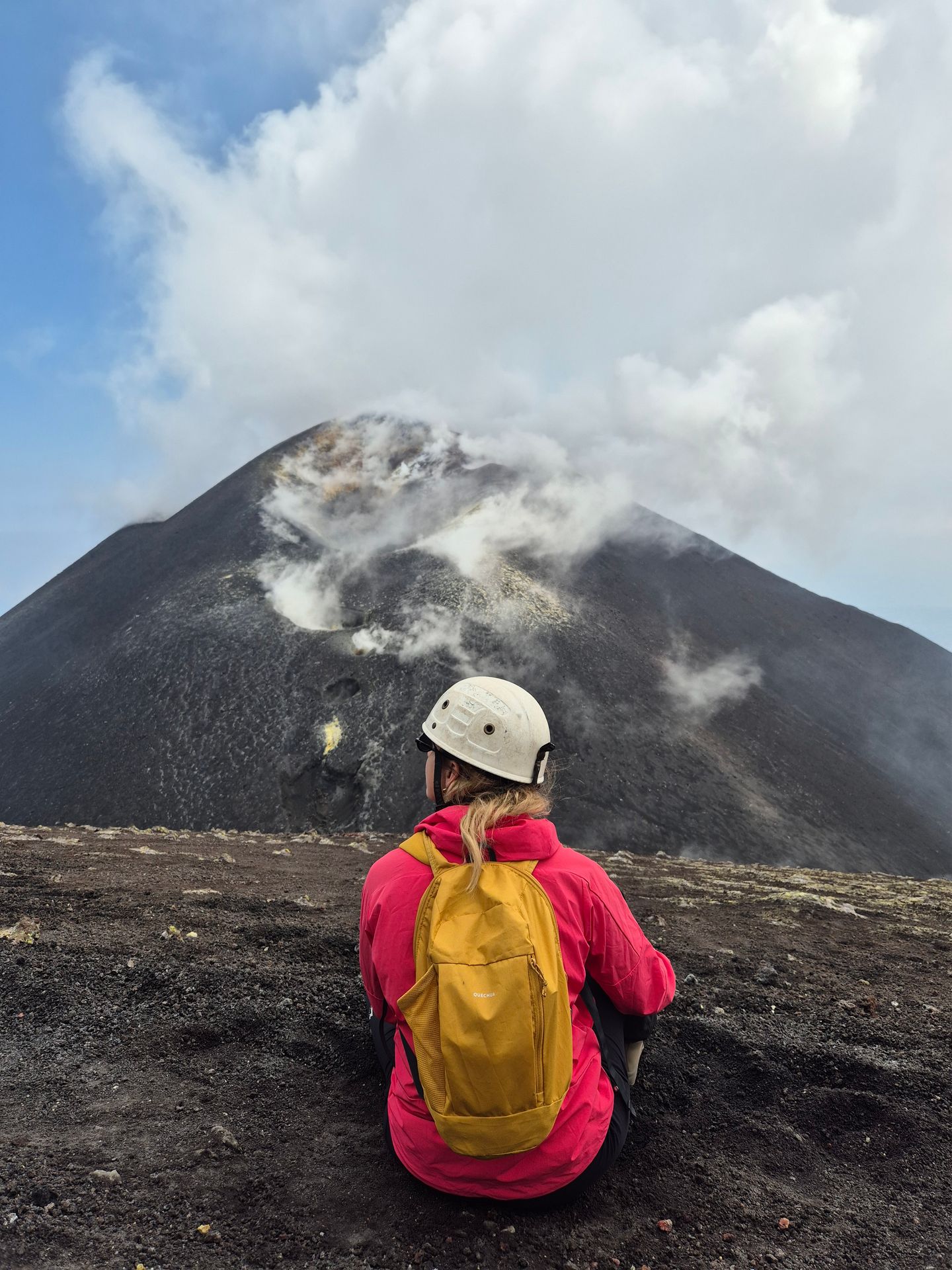
👉 You can purchase the Etna guided tour to the highest craters here.
- Cable car and jeep tours: Another popular option is to take the cable car and then a jeep up to about 2,800 meters (9,186 ft). From there, you can visit the lateral craters and admire the upper crater from a distance. The route reaches a maximum of around 3,000 meters (9,843 ft) and is a bit easier than the guided hike to the summit.
👉 You can purchase the tour to the lower craters, up to 3000 meters, here🔗.
- Wine and food tours: Etna’s volcanic soil produces unique wines and delicious local produce. Many tours combine hiking with wine tasting at nearby vineyards.
👉 From Taormina: Etna Walking Tour and Wine Tasting in Winery🔗 it's a good option for experiencing Etna wine
- Skiing in winter: Yes, Etna even offers skiing in winter, making it a rare place where you can ski with a sea view on clear days.
Taormina
Perched high above the Ionian Sea, Taormina is one of Sicily’s most charming towns, blending history, stunning views, and a vibrant atmosphere. Here are some of the best things to do while you’re there:
- Ancient Greek Theatre🔗: The city’s crown jewel, with panoramic views of Mount Etna and the coastline.
👉 You can purchase your ticket here🔗.

- Corso Umberto🔗: Taormina’s lively main street, lined with boutiques, cafés, and gelato shops.

- Villa Comunale Gardens🔗: a peaceful green escape with beautiful terraces and sea views.
⚠️ Taormina is stunning, but it’s also a hotspot for luxury tourism, which makes it quite expensive. Parking can be tricky and costly, especially in high season, so a great alternative is to take the cable car🔗 from the coast (Isola Bella🔗) to reach the town. As for dining, I’d skip most restaurants in town — the food tends to be overpriced and underwhelming compared to other parts of Sicily.
Isola Bella
Isola Bella is a tiny gem of the Ionian Sea, just off the coast of Taormina. You can reach it either by car or by taking the cable car from Taormina down to the beach, which makes it very accessible. The island itself is a protected nature reserve, home to a small museum that gives insight into its history and local flora. The real highlight, though, is the water — the clear, turquoise sea is teeming with colorful fish, so bringing snorkeling gear is a must to fully enjoy this underwater paradise.
⚠️Parking here is almost impossible, so it’s best to visit on weekdays if you can. Be prepared for big crowds — this spot attracts more tourists than almost anywhere else in Sicily. Still, once you’re in the water, the snorkeling makes it all worth it.

Dolphin Watching
Dolphin watching in Giardini Naxos is one of the most magical experiences you can have along Sicily’s coast. Just a short boat ride from the shore, you’ll find pods of dolphins playing in the Ionian Sea, sometimes swimming right alongside the boat. Tours usually last a couple of hours and often include stunning views of Mount Etna and the Taormina coastline from the water. It’s an unforgettable mix of nature and scenery — and if you’re lucky, you might even spot other marine life while enjoying the ride. Perfect for families, couples, or anyone who loves the sea, dolphin watching in Giardini Naxos is a must-do activity.
👉 Book ahead your tour Giardini Naxos: Dolphin Searching Sunset Boat Tour🔗
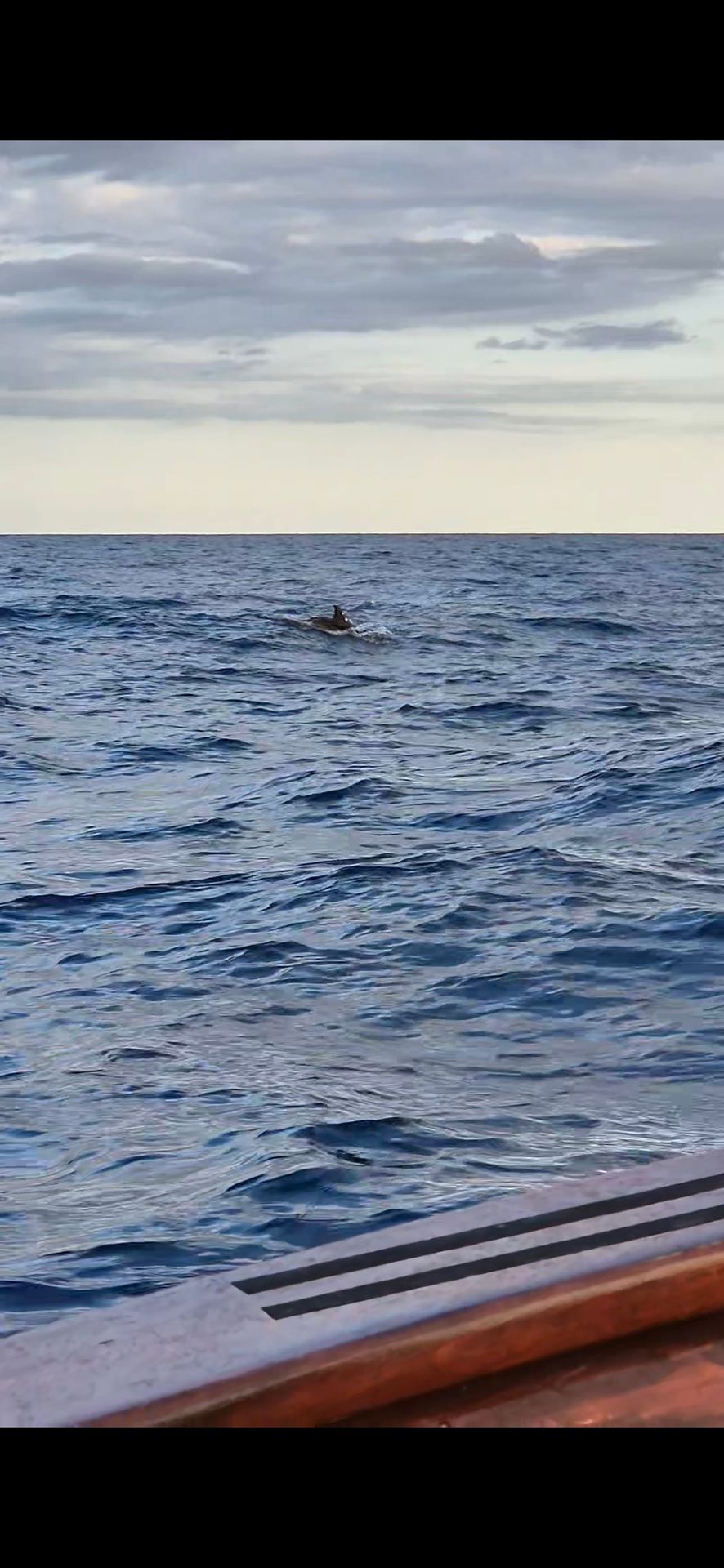
✨ I wouldn’t highlight Giardini Naxos itself, as the town isn’t particularly special, but it makes a fantastic base for boat tours — especially if you want to admire Taormina from the sea and spot dolphins along the coast.
👉 I suggest a boat tour, such as Taormina: Boat Tour with Sicilian Wine Tasting🔗 or Naxos: Taormina Boat Tour with Snorkeling and Prosecco🔗
North-West Sicily
Palermo
Palermo is a chaotic yet fascinating city where history, cultures, and flavors intertwine. From Arab-Norman architecture to bustling street markets and grand baroque churches, every corner tells a different story. Here’s what you shouldn’t miss when visiting Palermo:
- Palatine Chapel🔗(Cappella Palatina): a jewel of Norman-Arab-Byzantine art.
- Palermo Cathedral🔗: an architectural masterpiece blending centuries of styles.
- Teatro Massimo🔗: Italy’s largest opera house.

- Local markets: Palermo is home to three vibrant markets worth visiting:
- Ballarò🔗 – the oldest and most lively market, famous for its colorful food stalls, street food, and authentic Sicilian atmosphere.
- Vucciria🔗 – once a traditional market, today it’s also a nightlife hotspot, known for street food, bars, and a vibrant social scene.
- Mercato del Capo🔗 – a maze of narrow alleys filled with fresh produce, fish, and spices, offering a true taste of local daily life.
✨ Vucciria was probably my favorite — it felt the biggest and most vibrant — but honestly, all three markets are worth experiencing.
- Quattro Canti🔗: The iconic Baroque crossroads at the very heart of Palermo, where four grand façades decorated with fountains, statues, and intricate details represent the four seasons, the Spanish kings, and the city’s patron saints. It’s one of the most photographed and symbolic spots in the city.

🍽️ Best restaurants in Palermo Sicily: Palermo is a paradise for food lovers, with flavors that reflect its mix of cultures and history. Street food is king here — you can’t miss trying arancine (crispy rice balls with delicious fillings), panelle (chickpea fritters). For the adventurous, there’s stigghiola (grilled lamb intestines) or pane ca’ meusa (a soft bread stuffed with spleen and cheese).
👉 If you want to sample all the best local specialties in one go, I highly suggest the Palermo: Street Food Walking Tour with Local Guide & Tasting🔗 — it’s the perfect way to eat your way through Palermo!
⚠️ Palermo isn’t the safest city in Italy, but that doesn’t mean you shouldn’t visit. It’s just good to be aware that pickpocketing is more common here than in other Italian cities, and some neighborhoods are best avoided. I recommend choosing accommodation close to the city center and, if you have a car, avoid leaving it parked on the street overnight. I personally kept mine in a monitored parking lot🔗, which gave me peace of mind.
👉 I stayed at B&B La Tua Dimora🔗
San Vito Lo Capo
Tucked away on the northwestern coast of Sicily, San Vito Lo Capo is a slice of paradise that feels like it belongs in a postcard. Famous for its powdery white beaches, crystal-clear turquoise waters, and the dramatic backdrop of the Monte Cofano Nature Reserve, this charming town is the perfect mix of relaxation, adventure, and authentic Sicilian charm. What to see in San Vito Lo Capo:
- San Vito Lo Capo Town🔗: A charming coastal town with colorful streets, local markets, and traditional Sicilian vibes.
- San Vito Lo Capo Beach🔗: The town’s iconic white sand beach with crystal-clear turquoise waters, ideal for swimming, sunbathing, and watersports.
- Cala Billeci🔗: A lesser-known cala, still within the town of San Vito, but definitely worth a visit.
- Cala Mancina🔗: Cala Mancina isn’t in San Vito Lo Capo itself, but just a short distance away. This wild, untouched cove offers a more rugged and natural experience.
⚠️ San Vito Lo Capo is more than just a destination—it’s a strategic base for exploring the surrounding area, where the true beauty of this region unfolds.
Monte Cofano Nature Reserve
Just a short distance from San Vito Lo Capo, the Monte Cofano Nature Reserve awaits—a wild, untouched paradise that feels worlds away. With dramatic cliffs, crystal-clear waters, and hidden coves around every corner, it’s a nature lover’s dream. Below, you’ll discover the must-see calette that make this area truly unforgettable:
✨ Don’t forget to bring a mask for snorkeling—these waters are full of colorful fish!
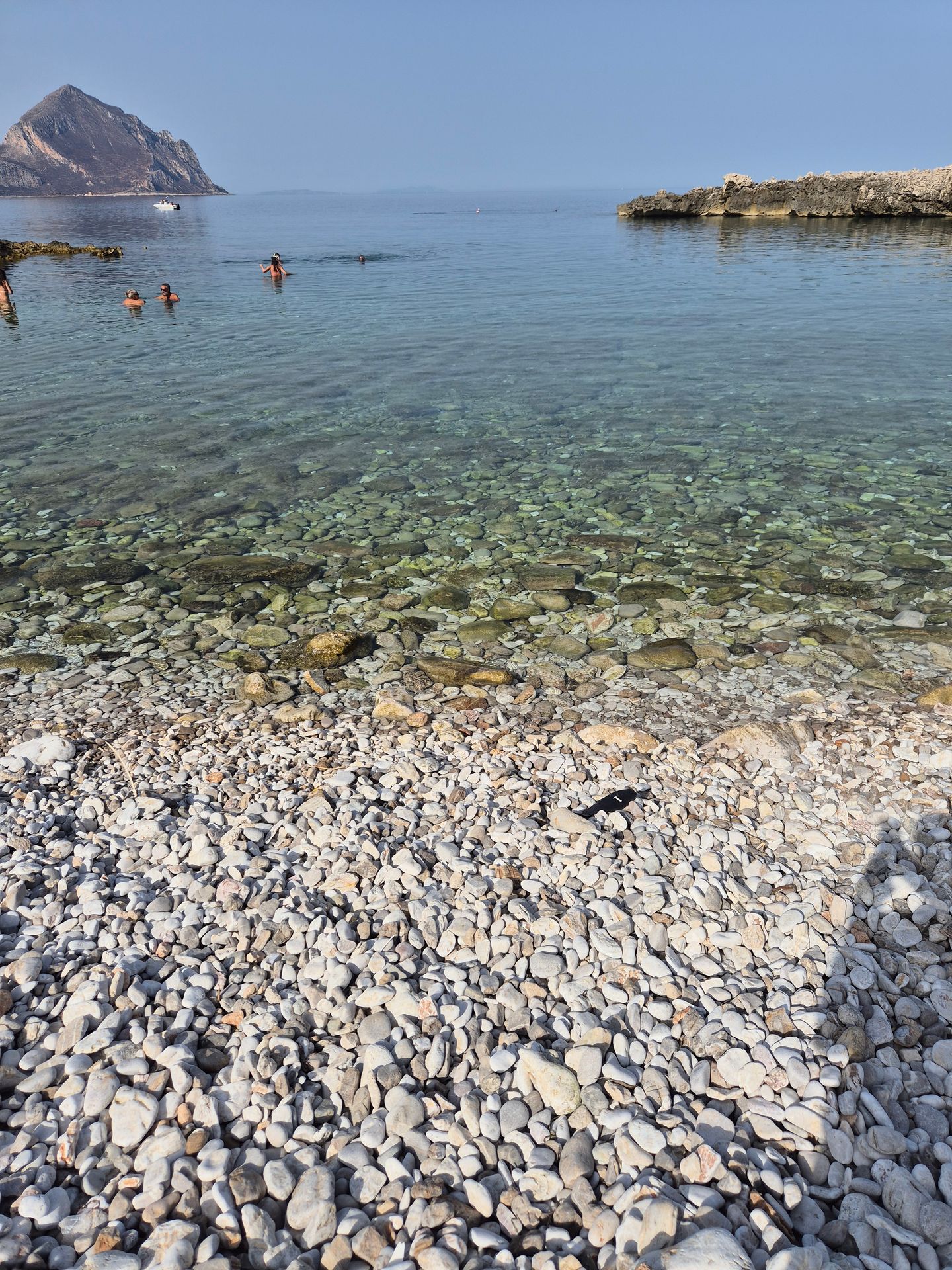
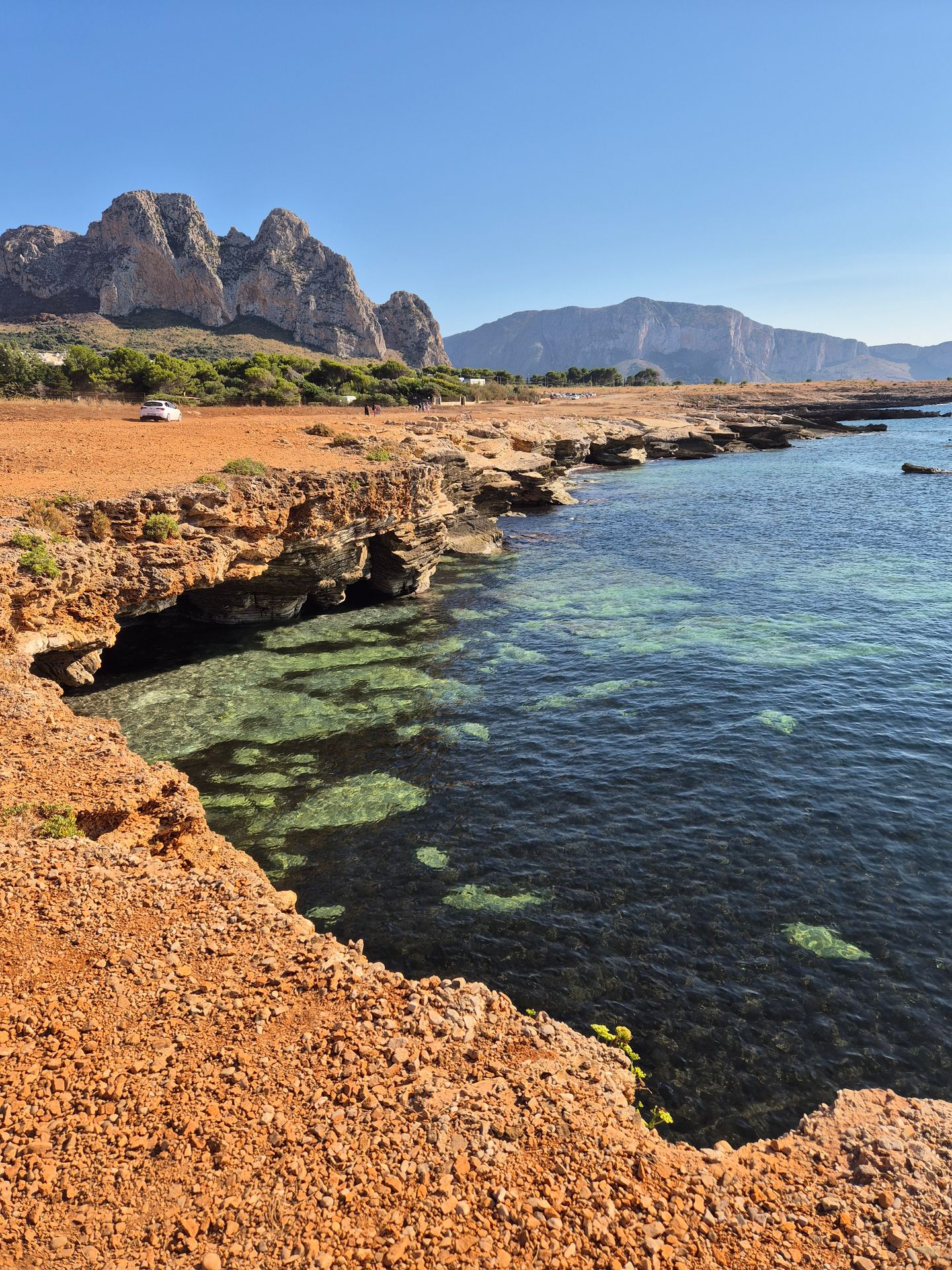
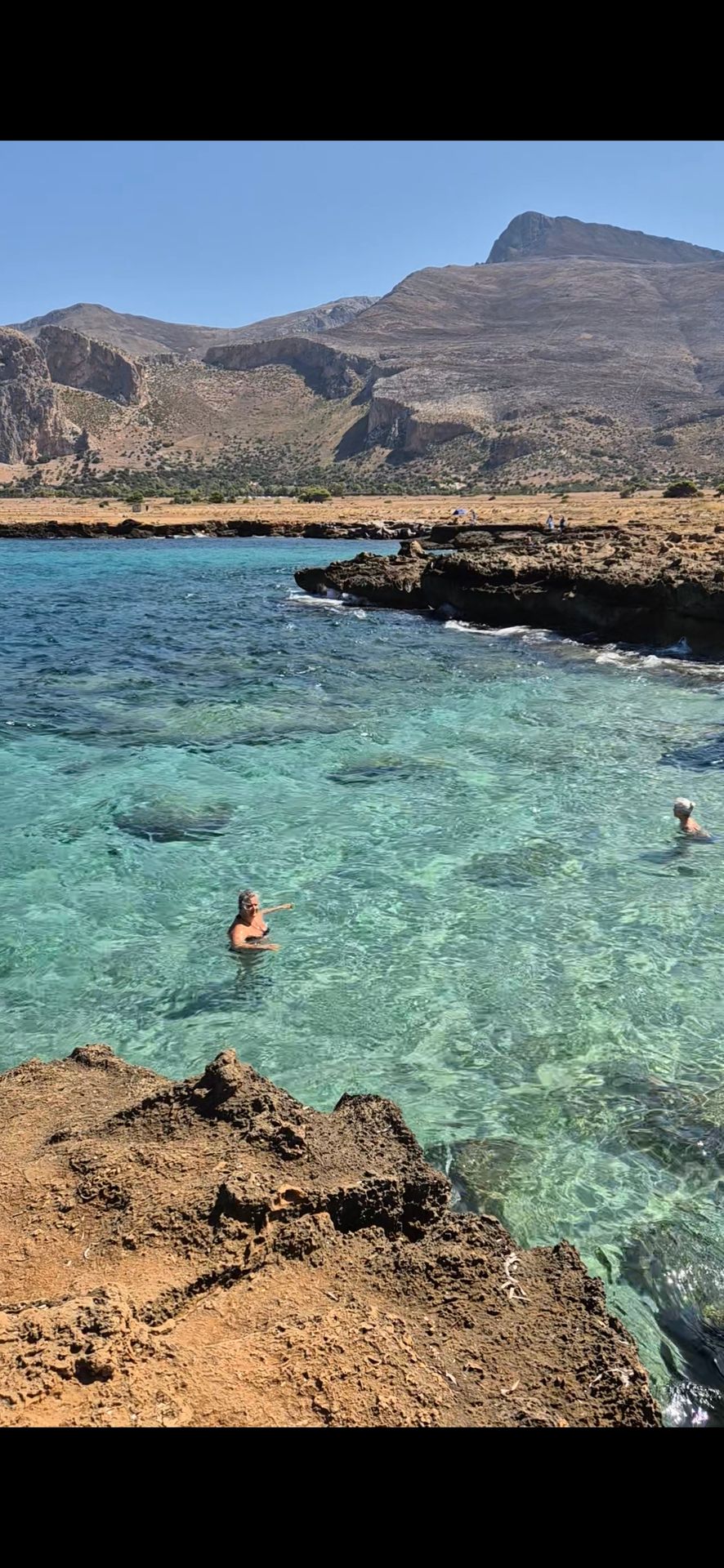
✨ Sunsets here are truly magical. Find a cala you love, settle in, and watch the sun slowly dip below the horizon.
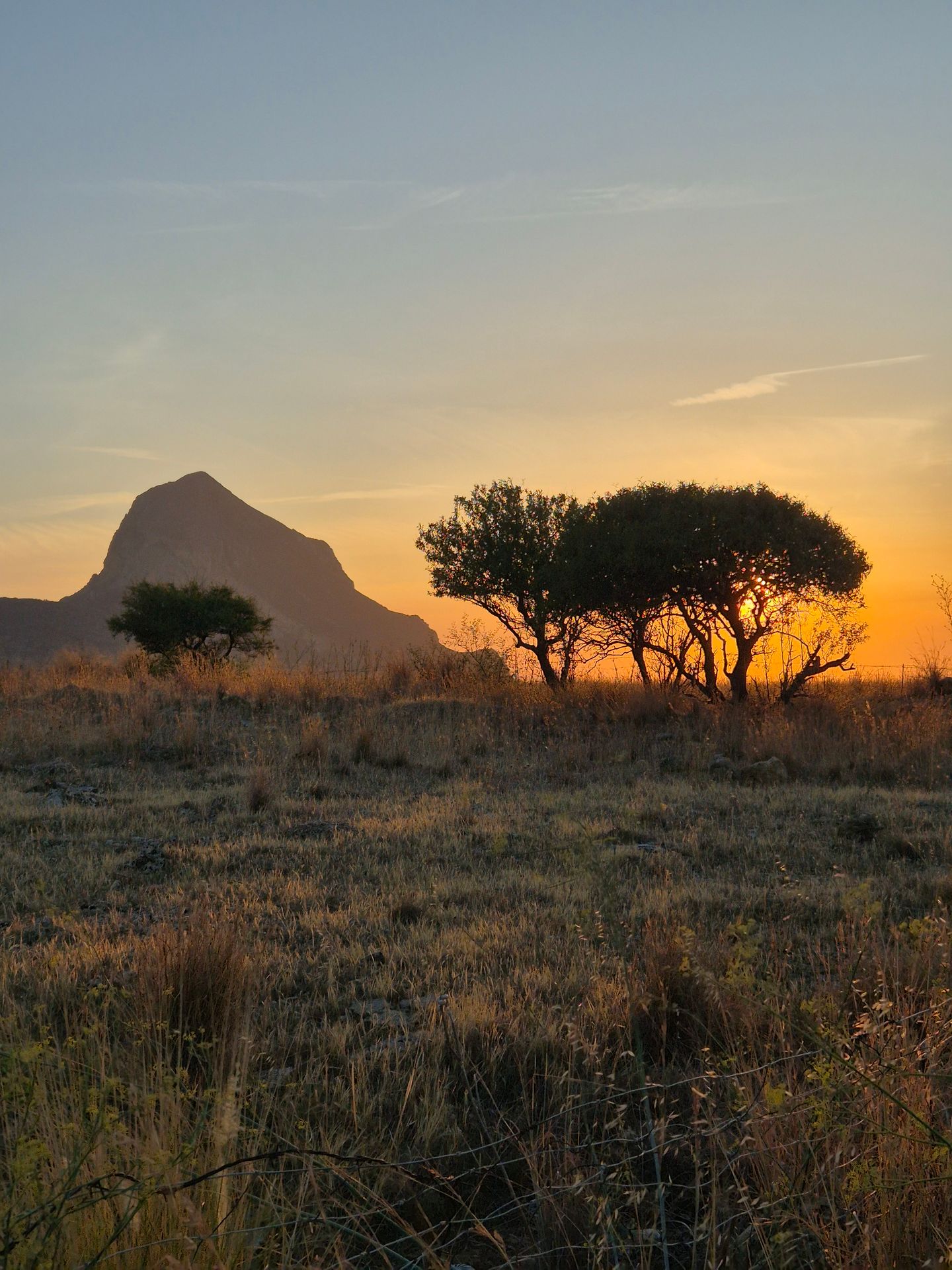
⚠️ Parking is available at each cala and is free of charge
👉 You can also explore the area on a boat tour🔗, enjoying a different perspective of the coastline.
Riserva Naturale dello Zingaro
Just a short drive from San Vito Lo Capo, the Riserva Naturale dello Zingaro is a protected coastal reserve that feels like stepping into an untouched paradise. Stretching along rugged cliffs, hidden coves, and crystal-clear waters, it’s a haven for hikers, nature lovers, and beach seekers alike.
Below, you’ll discover the must-see calette:

⚠️ The Riserva Naturale dello Zingaro has two main entrances. The Scopello entrance on the southern side allows visitors to start their hike from the village of Scopello and explore trails leading north along the coast, giving access to coves like Cala Mazzo di Sciacca. On the northern side, the San Vito Lo Capo entrance is the most popular, with trails heading south toward stunning spots such as Cala Tonnarella dell’Uzzo and Cala Marinella. The coves in the reserve are not accessible by car—all visitors must hike along the scenic coastal trails to reach these hidden beaches, making the journey part of the adventure.
👉 Alternatively, you can explore the Riserva Naturale dello Zingaro by boat🔗, which is a great option during the hot summer months when hiking along the trails can be challenging.
Erice
Perched 750 m (2,460 ft) above sea level, Erice feels like a town frozen in time. With its cobbled streets, ancient stone walls, and panoramic views of the Sicilian coastline, it’s a place where history and charm meet in every corner. What to See in Erice:
- Castello di Venere🔗: Explore the ruins of this Norman castle, built on the site of an ancient temple to Venus. From here, enjoy sweeping views of the surrounding mountains and the sea below—a photographer’s paradise.
- Old Town: Lose yourself in narrow, winding alleys lined with stone houses and quaint squares. Every corner is perfect for strolling, snapping photos, or simply soaking up the medieval atmosphere.
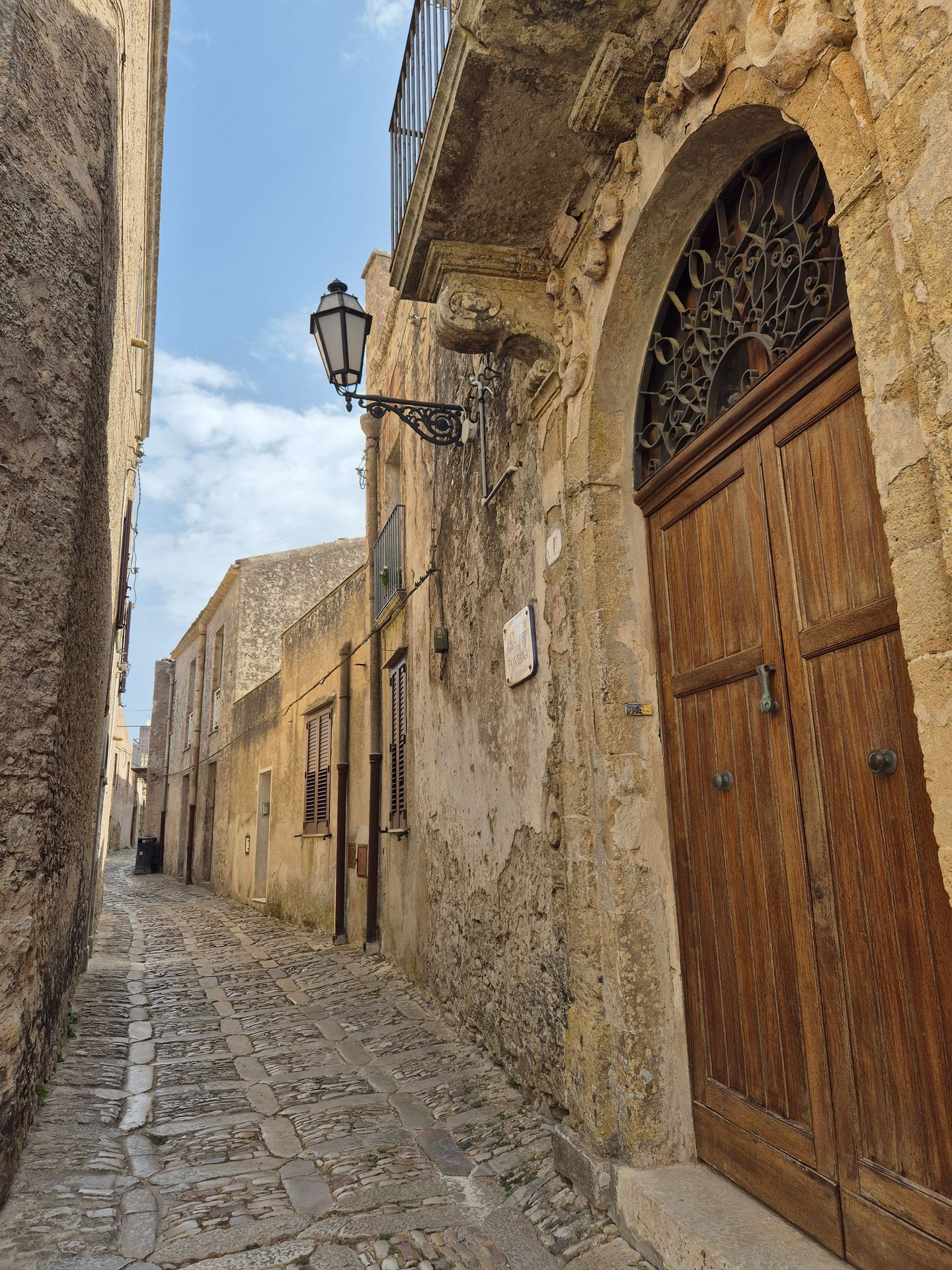
- Chiesa Madre🔗 (Mother Church): This Gothic church is a centerpiece of the town, with beautiful architecture and a serene interior that reflects Erice’s rich history.
- Pastry Shops: No visit is complete without tasting the famous “genovesi”, delicate pastries filled with creamy custard or ricotta, a true Sicilian delight that locals have perfected over centuries. You can find the originals at Antica Pasticceria da Michele🔗 or Antica Pasticceria del Convento🔗.

⚠️ Parking is not available in Erice’s old town, but you can leave your car in the parking areas located along the road leading up to the town.
Trapani
Trapani is a captivating mix of sea views, history, and unique landscapes. This port city on Sicily’s western coast charms visitors with its baroque architecture, vibrant old town, and natural wonders nearby. What to See in Trapani:
- Salt Pans of Trapani and Paceco🔗: A surreal landscape of shimmering salt flats dotted with traditional windmills.
✨ The sunsets here are unforgettable, with fiery skies reflecting on the water. You can purchase your tour ticket here🔗.
👉 Another popular option is the guided 'Trapani: Salt Pans Sunset Tour and Flamingo Walk'🔗, where you can admire the salt pans glowing at sunset while spotting graceful flamingos in their natural habitat.
- Old Town: Wander along Corso Vittorio Emanuele🔗, the city’s main street, lined with elegant palaces and baroque churches. Don’t miss the lively piazzas and local cafés.
- Torre di Ligny🔗: This 17th-century watchtower sits dramatically on a rocky point, offering sweeping sea views and housing a small archaeological museum.

🍽️Beyond its history and sea views, Trapani shines for its gastronomy. The city is full of excellent restaurants, and for an authentic taste of local cuisine, I recommend trying AL VICOLETTO Ristorantino Tipico🔗 and CANTINA SICILIANA🔗.
Favignana
Just a short ferry ride from Trapani, Favignana is the largest of the Egadi Islands and a must-visit for sea lovers. The island is world-renowned for its crystal-clear turquoise waters, often compared to the Caribbean, and for its relaxed, slow-paced atmosphere.
🚲 You can reach Favignana by taking the official ferry lines departing from Trapani or Marsala. Once on the island, the most popular way to explore is by renting an e-bike, which makes it easy to reach the famous beaches since the island is relatively small and flat. Ferry tickets can be purchased online or directly at the port.
⛵ Another great option is to join a boat tour from Trapani or Marsala. This allows you not only to discover Favignana’s hidden calette but also to explore the nearby island of Levanzo, a lesser-known but equally beautiful gem of the Egadi archipelago.
✨ I personally chose to take a boat tour, since during high season the island gets quite crowded. It turned out to be one of the best boat trips I’ve ever had! The water was incredibly clear — I could see countless fish, even in deeper spots, which was just magical. The tour also took us to hidden coves and to the island of Levanzo, which felt wonderfully wild and untouched. 👉 Here🔗 you find the tour I picked.

🍽️ Favignana may be a small island, but its food is packed with flavor. Seafood dominates the menu here, and for good reason — fresh tuna, swordfish, and local fish are caught daily and prepared in simple yet delicious ways. I can't recommend enough Non solo Formaggi Panini Favignana🔗, a small camioncino (food truck) serving panini packed with typical Favignana ingredients — think fresh tuna, local cheeses, and sun-ripened vegetables. It’s the perfect spot for a quick, authentic bite while exploring the island.
Cefalù
Cefalù is one of Sicily’s most picturesque coastal towns, where medieval charm meets a laid-back seaside vibe. With its golden beach, winding alleys, and dramatic backdrop of La Rocca, it’s no surprise this small town is among the island’s top destinations. What to see in Cefalù:
- Cefalù Cathedral🔗 (Duomo di Cefalù): A UNESCO World Heritage site, famous for its 12th-century Norman architecture and stunning Byzantine mosaics of Christ Pantocrator.
- The Old Town: Lose yourself in narrow medieval streets, lined with shops, cafes, and traditional trattorias.
- Cefalù Beach🔗: A long sandy stretch right next to the old town, perfect for sunbathing and swimming.
- Spiaggia Kalura🔗: Spiaggia della Kalura is a lesser-known beach, but a wonderful spot for swimming, with crystal-clear water and plenty of colorful fish.

Castelnuovo
Castelnuovo is a charming Sicilian village where time seems to stand still. Tucked away in the countryside, it’s surrounded by olive groves, vineyards, and rolling hills, making it a peaceful retreat far from the tourist crowds. With its cobbled streets, small piazzas, and warm local hospitality, Castelnuovo offers visitors an authentic taste of traditional Sicilian life. What to Do in Castelnuovo:
- Historic Center: Stroll through narrow lanes lined with stone houses and soak in the timeless atmosphere.
- Castelnuovo’s Famous Panettone: A must-do for food lovers! Castelnuovo is renowned across Sicily for its artisanal panettone, a sweet bread typically associated with Christmas but here enjoyed year-round. Local pastry chefs prepare it with incredible skill, using high-quality ingredients and often adding unique Sicilian touches like pistachios, citrus, or almonds. And for the full experience, don’t just eat it plain—panettone here is best enjoyed with a scoop of ice cream and a dollop of whipped cream, turning it into an unforgettable indulgence.

🍽️ Stop at a family-run trattoria or a local bakery to savor authentic Sicilian flavors. The trattorie in Castelnuovo are amazing, whether you’re enjoying a relaxed aperitivo or sitting down for a hearty dinner out.
✨ Castelnuovo is often skipped by tourists, but it’s worth visiting to see a different side of Sicily. The life here is vibrant, authentic, and deeply rooted in tradition.
Gole di Tiberio
Hidden in the Madonie Park, not far from San Mauro Castelverde, the Gole di Tiberio (Tiberius Gorges) are one of Sicily’s most underrated natural wonders. This dramatic canyon, carved by the Pollina River, stretches for about 400 meters (1,300 ft) with limestone cliffs towering up to 50 meters (160 ft).
☀️In summer, you can book a guided experience and explore the gorge with small inflatable boats (gommoni), gliding through narrow passages and discovering caves along the way.
🌸In spring, when the river is full and powerful, rafting offers an even more adventurous way to experience its emerald waters. Beyond its natural beauty, the gorge is part of a UNESCO Global Geopark and steeped in local legends, making it a must-visit for travelers who love mixing outdoor adventure with a touch of history.
👉 You can book your experience in this area:
Planning a perfect day trip doesn't have to be overwhelming. By following these steps and considering your preferences, you can create an unforgettable experience. So, pack your bags, choose your destination, and get ready for an adventure!